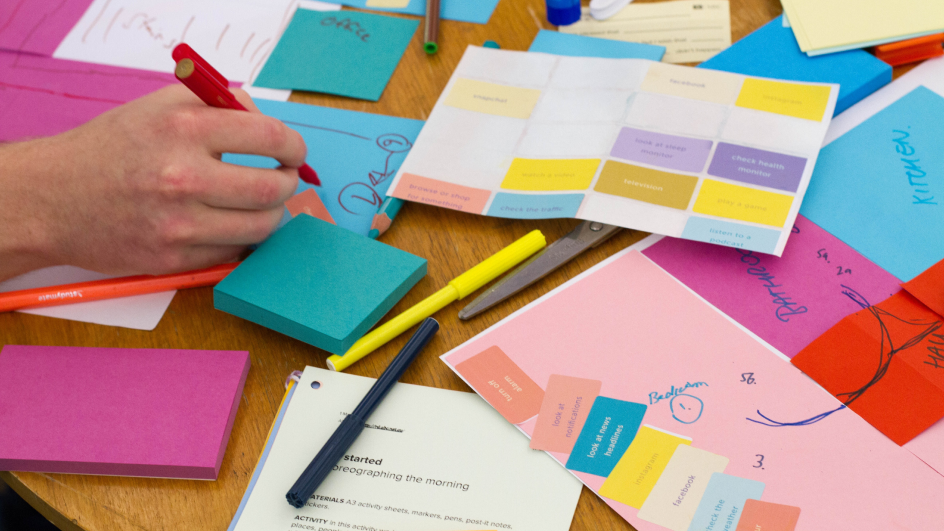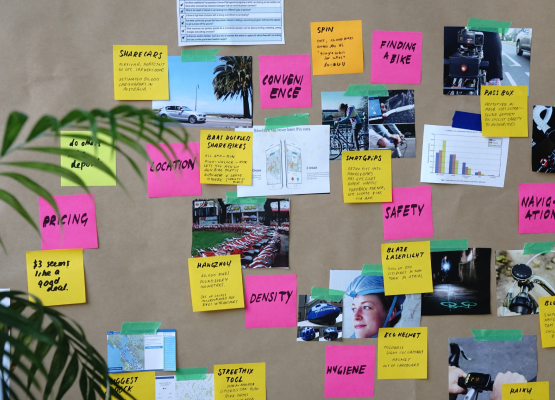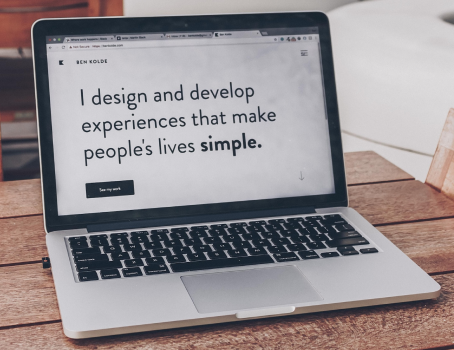
Design Thinking-5 easy ways to make you a Pro
January 23, 2023
January 23, 2023
Tell us about your project right here, or send us an email at hello@penonpaper.in

In a broad sense, gathering new information or investigating in a systematic way to find facts is research. We have often heard the term in relation to academics or in scientific circles. However, did you know that research plays a pivotal role in the field of Design?
It is only logical to imagine products and web experiences which are designed for the masses will require the designer to gain a 360 degree understanding of the needs of these users.
This is where User Experience Design comes into the framework. It is a process which ensures the creation of a convenient and functional user interface. Quite simply, UX research involves really engaging with the user to figure out what makes them excited or what puts them off, well before the product is designed.

UX research allows the designer to see how the users usually navigate through the system, where they face challenges and how these influence their decisions.
The main objectives of UX Research are:
Steps involved in UX Research:
Now that we understand the value of conducting Research, on our users, let's discuss the steps involved in such a venture. The steps listed below are mainly about formulating relevant Questions and gaining Understanding from the answers (hypothesis). Other steps are concerned with collecting knowledge through various UX research methods.
UX research methods fall into two broad camps:
Quantitative research is any research that measures Numerical Values. Quantitative research provides answers to the questions "How many users clicked?", "How many users found a call to action?", "How many users left the site during checkout?" Quantitative research is essential for understanding of statistical data.
Qualitative research helps understand why users do what they do, and often takes the form of interviews or conversations. They answer the questions: "What stop them from clicking?", "Why can't they locate the call to action?", "Why are they leaving the site?"
Popular Forms of Research:
All UX projects are different, so the list of tasks can vary significantly and UX designers can choose which method works best based on their project requirement. The most popular forms of research are interviews, polls and questionnaires, card sorting, usability testing, hierarchy testing, and A / B testing.
User Group Studies:
A valuable UX research technique is to organize a focus group, where pre- structured interviews are conducted on a selected group of 4-7 people. This method is a quick and cost effective way to uncover the desires, expectations, perceptions and attitudes of the target audience. It is good practice to ask a diverse set of questions or to create discussion guides with 4-5 topics beforehand. Ensure that there is a person to take notes, someone to moderate the group and a skilled person to conduct the interview and lead the discussion. The data collected is then analysed and findings then used to modify the interface or product design.
Sorting cards:
Card Sorting is used to build the information architecture of a product. For example, this method helps to organize the navigation of the marketplace, divide it into segments and prioritize it.
Usability testing:
Usability testing is about observing the user as they evaluate the service or product. Its motive is to collect data upon observing usability problems and gauge the overall experience of the person using the service.
Tree tests:
Just like sorting cards is a good way to gather information before building your site / application architecture. In a tree test, users are given an assignment - they are given the top level of the site / application map, and then asked to tell them how they will proceed to complete the assignment.
A / B testing:
A / B testing is used when designers are trying to choose between two competing elements (style, buttons, etc.). An A / B test assumes that each option is randomly shown to the same number of users, and then the researcher analyzes which option is best for achieving the goal. Online Surveys:Most of us have encountered a survey or two while navigating the internet, haven't we? A great way to collect information automatically and by skilfully crafting survey questions in a variety of formats and sizes. A UX researcher should ensure that the questions asked are open ended and allow the user to narrate their experience. This way the feedback received will be more organic and unique. It is also worthwhile to keep the question engaging, the format short and the language simple.
Lastly, Conducting Analysis on your User UX Research:
The analysis phase will begin after the user data is brought in after a thorough UX research. The primary objective now is to gather the research material and extract valuable insights from it. This is where you gain understanding of the data and its meaning when it comes to the product that is being designed. A good starting point is to ask- What do we learn from the data that we did not know earlier? Hopefully the answer will provide the necessary context to the design and development of your product and give you the true value of UX Research.

January 23, 2023

January 23, 2023